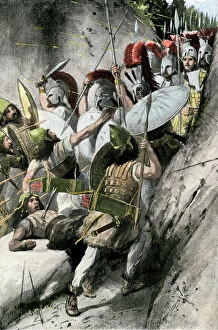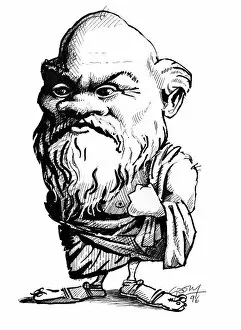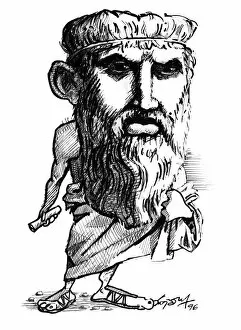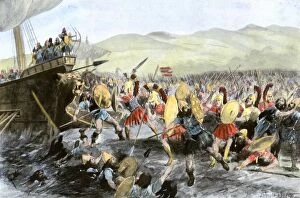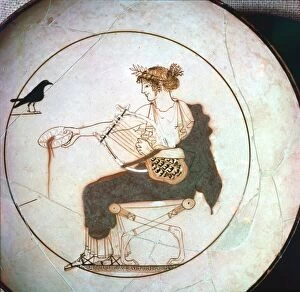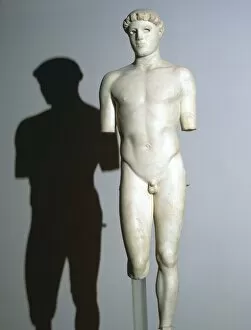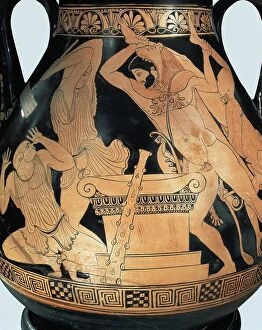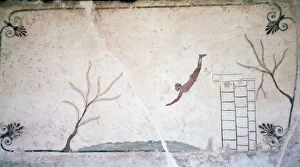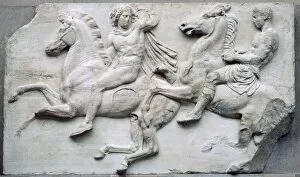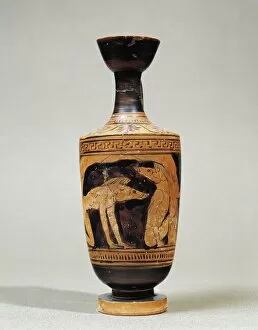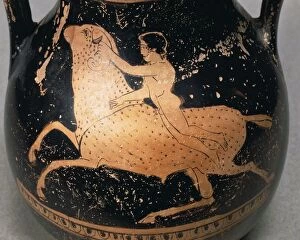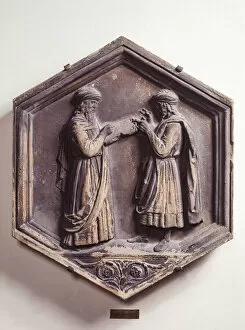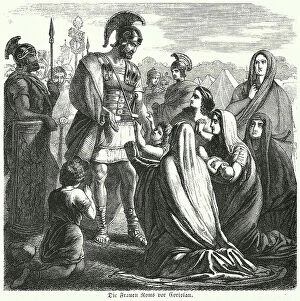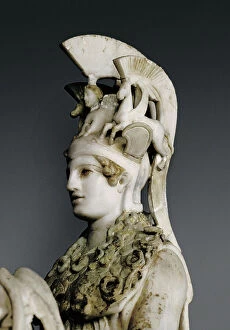5th Century Bc Collection
The 5th century BC was a time of great intellectual and artistic achievements, as well as significant historical events
All Professionally Made to Order for Quick Shipping
The 5th century BC was a time of great intellectual and artistic achievements, as well as significant historical events. It marked the golden age of Ancient Greece, where philosophers like Socrates and Plato emerged to shape the foundations of Western philosophy. In this caricature, Socrates can be seen engaging in his famous method of questioning. Another notable event from this era was the Battle of Thermopylae, where brave Ancient Greeks held their ground against Persian invaders in 480 BC. This sculpture depicts that heroic moment, showcasing their determination and courage. Moving on to Rome, we find a captivating sculpture known as the She Wolf dating back to the 5th century BC. Though Romulus and Remus were likely added later, it symbolizes the founding myth of Rome with its nurturing nature. Plato, another influential philosopher from this period, is depicted here in both a serious portrait and a playful caricature. His ideas on justice and ideal forms continue to inspire thinkers today. Pericles also played a crucial role during this time as an Athenian statesman who led Athens' cultural renaissance. Under his leadership, magnificent structures like the Temple of Hephaestus were built in Athens' ancient agora - a testament to Greek architectural brilliance. Herodotus stands out among historians for his meticulous research and storytelling abilities. His works provide valuable insights into ancient civilizations through beautiful artwork such as this one. In Persia's Naqsh-e Rostam Necropolis lies the tombs of Darius II, Ataxerxes I, and Darius the Great - rulers who left an indelible mark on history during this period. These grand tombs serve as reminders of their powerful reigns over vast empires. Across continents in Peru lies another fascinating artifact: The Chavin Stele or Raimondi stele drawing portrays a chieftain wearing elaborate ceremonial attire. It offers us glimpses into the ancient Chavin civilization's rich culture and beliefs.

